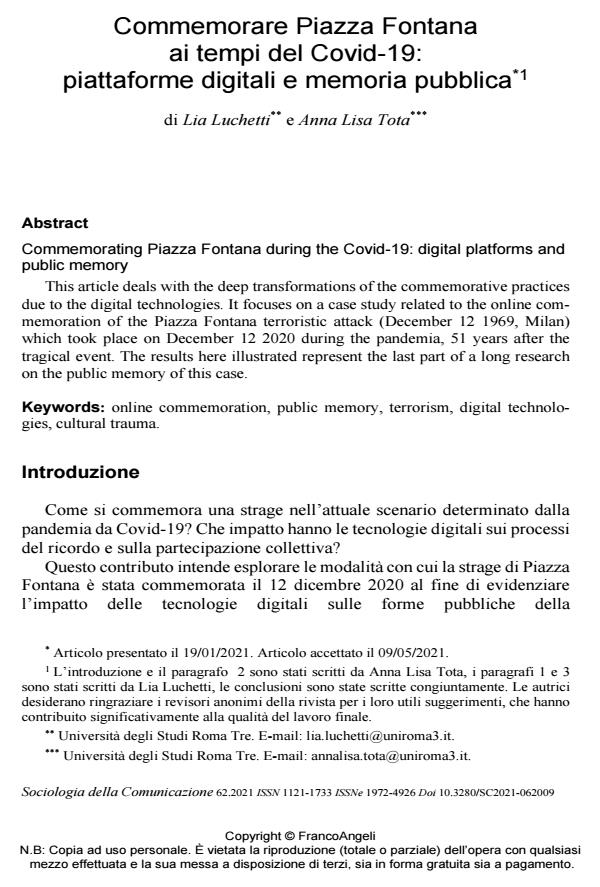Commemorating Piazza Fontana during the Covid-19: digital platforms and public memory
Journal title SOCIOLOGIA DELLA COMUNICAZIONE
Author/s Lia Luchetti, Anna Lisa Tota
Publishing Year 2021 Issue 2021/62
Language Italian Pages 21 P. 139-159 File size 320 KB
DOI 10.3280/SC2021-062009
DOI is like a bar code for intellectual property: to have more infomation
click here
Below, you can see the article first page
If you want to buy this article in PDF format, you can do it, following the instructions to buy download credits

FrancoAngeli is member of Publishers International Linking Association, Inc (PILA), a not-for-profit association which run the CrossRef service enabling links to and from online scholarly content.
This article deals with the deep transformations of the commemorative practices due to the digital technologies. It focuses on a case study related to the online commemoration of the Piazza Fontana terroristic attack (December 12 1969, Milan) which took place on December 12 2020 during the pandemia, 51 years after the tragical event. The results here illustrated represent the last part of a long research on the public memory of this case.
Keywords: online commemoration, public memory, terrorism, digital technologies, cultural trauma.
Lia Luchetti, Anna Lisa Tota, Commemorare Piazza Fontana ai tempi del Covid-19: piattaforme digitali e memoria pubblica in "SOCIOLOGIA DELLA COMUNICAZIONE " 62/2021, pp 139-159, DOI: 10.3280/SC2021-062009